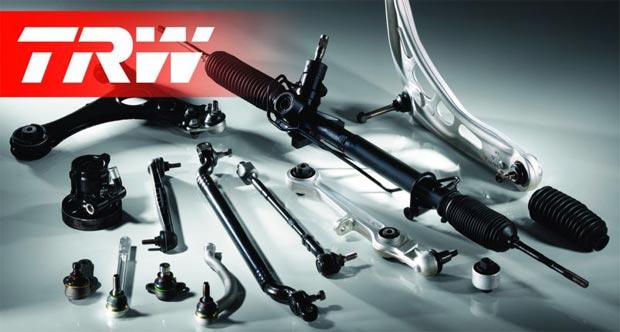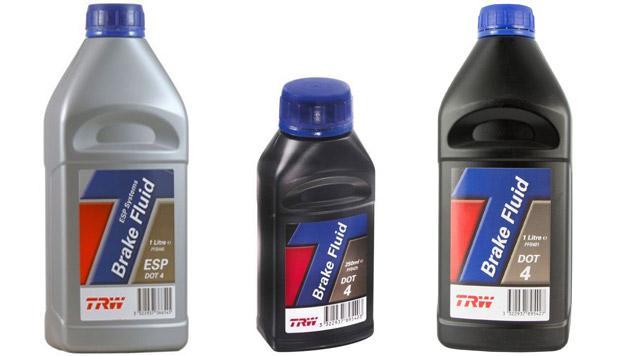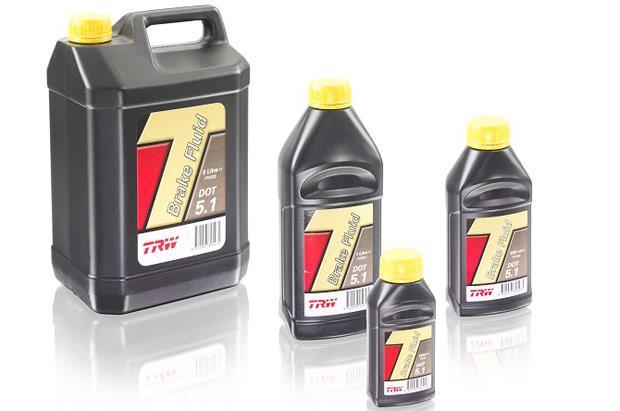
Brake fluids from TRW
Company History
TRW was founded in the US state of Michigan (Livonia) in 1904. Initially, the company aimed at the production of brake system components for the rapidly developing automotive industry.
The first serious order for the company in 1908 was the development and production of wooden wheels for cars of the young and rapidly growing Ford company. In 1928, the TRW engineering department developed and implemented the parking brake into the design of a stock Ford car.


In the following decades, the company actively developed and introduced new technologies in the field of braking systems and steering of cars. For example, in the second half of the XNUMXth century, the company developed the most advanced anti-lock braking system designs at that time and won a major tender to service the entire line of GM cars.
Today, TRW is a world leader in the manufacture of steering and chassis components for modern cars, as well as other consumables for the automotive industry.


Overview of TRW Brake Fluids
Immediately, we note several common characteristics inherent in all TRW brake fluids.
- Really high quality. All TRW brake fluids significantly exceed international standards.
- Stability and homogeneity of the composition of liquids, regardless of the batch. Regardless of the manufacturer, brake fluids can be safely mixed with each other.
- Good resistance to the accumulation of moisture in the volume of liquids, which prolongs their service life.
- The price is higher than the average market, but not a record in the segment.


Consider the currently available TRW brake fluids on the Russian market, starting with the simplest ones.
- TOD 4. The simplest of the family. Created according to the classical scheme: glycol and a package of additives. Suitable for unloaded brake systems rated DOT-3 or DOT-4. Hereinafter, the table presents the real (not from the standard of the American Department of Transportation, but obtained through research) characteristics of the liquids in question.
| Тbale dry, °C | Тbale humid., °C | Viscosity at 100 °C, cSt | Viscosity at -40 °C, cSt |
| 270 | 163 | 2,34 | 1315 |
As can be seen from the table, the liquid significantly exceeds the requirements of the DOT standard. It retains fluidity at low temperatures. At high temperatures, it remains sufficiently viscous so as not to lose its lubricating properties.
- DOT 4 ESP. Brake fluid designed for civilian vehicles with ABS and automatic stability control.
| Тbale dry, °C | Тbale humid., °C | Viscosity at 100 °C, cSt | Viscosity at -40 °C, cSt |
| 267 | 172 | 2,1 | 675 |
The liquid copes well with the problem of waterlogging and does not sag at the boiling point. The low low temperature viscosity is due to the requirement of the standard for systems with ABS and ESP. Viscosity up to 750 cSt is considered the norm here.
- DOT 4 Racing. Fortified with additives, glycol brake fluid designed for high-load systems, designed to meet the DOT-4 standard.
| Тbale dry, °C | Тbale humid., °C | Viscosity at 100 °C, cSt | Viscosity at -40 °C, cSt |
| 312 | 204 | 2,5 | 1698 |
This product has high boiling resistance and tolerates low temperatures well. At the same time, when moistened with even 3,5% water, the liquid remains able to withstand temperatures above 200 °C. Viscosity is above average in the segment of similar products in all temperature ranges.


- TOD 5. silicone option. The fluid is designed for modern brake systems in which the use of silicone products is acceptable.
| Тbale dry, °C | Тbale humid., °C | Viscosity at 100 °C, cSt | Viscosity at -40 °C, cSt |
| 300 | 220 | 13,9 | 150 |
A distinctive feature of DOT-5 from TRW is its high high temperature viscosity. At the same time, at a temperature of -40 °C, the liquid retains abnormal fluidity. In fact, TRW's DOT-5 hardly freezes in cold weather. At the same time, its service life up to a critical accumulation of moisture reaches 5 years.
- TOD 5.1. Modern, more advanced glycol brake fluid. Designed for cars after 2010 release.
| Тbale dry, °C | Тbale humid., °C | Viscosity at 100 °C, cSt | Viscosity at -40 °C, cSt |
| 267 | 187 | 2,16 | 810 |
Among the glycol options, modern DOT 5.1 class fluids have extremely low viscosity at low temperatures. This is achieved through additives. Can be used instead of DOT-4 in case of car operation in northern regions.
- DOT 5.1 ESP. Modern fluid for brake systems equipped with ABS and ESP.
| Тbale dry, °C | Тbale humid., °C | Viscosity at 100 °C, cSt | Viscosity at -40 °C, cSt |
| 268 | 183 | 2,04 | 712 |
Traditionally low low temperature viscosity and good boiling resistance. The fluid is slightly more fluid throughout the operating temperature range than regular TRW DOT-5.1.
TRW products, unlike ATE brake fluids of similar quality, are quite widespread in the Russian Federation, and they can be purchased without any problems even in remote regions of the country.


Reviews car owners
Motorists overwhelmingly respond positively to TRW brake fluids. One concept can be traced in the reviews: with its consistently high working qualities and durability, the price is more than acceptable.
For example, a liter can of DOT-4 brake fluid, which is the most popular in the Russian Federation today, will cost an average of 400 rubles. In this regard, there is a kind of bias among TRW products in general. For example, elements of braking systems and steering from this company occupy almost the top positions in the market in terms of price. This feature does not apply to liquids.
Negative reviews are more like theoretical assumptions from the category: “Why pay more for a brand if you can buy a budget liquid 2 times cheaper and just change it more often.” Such an opinion also has the right to life. Especially considering that the procedure for replacing brake fluid is not very expensive, and many motorists are able to carry it out on their own.


Watch this video on YouTube
